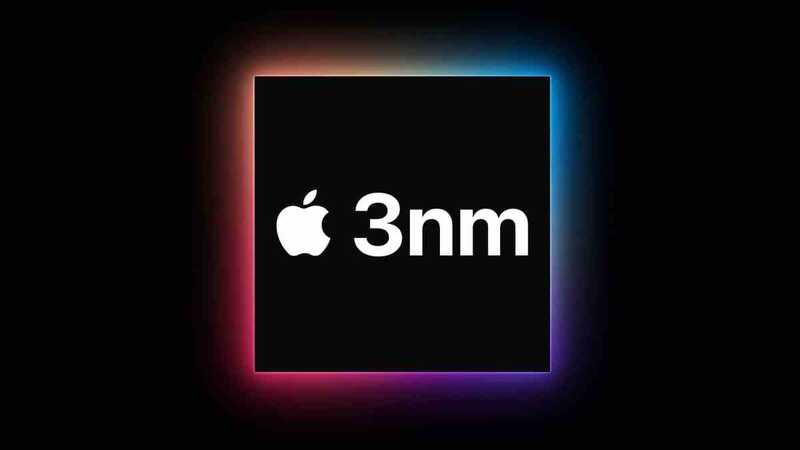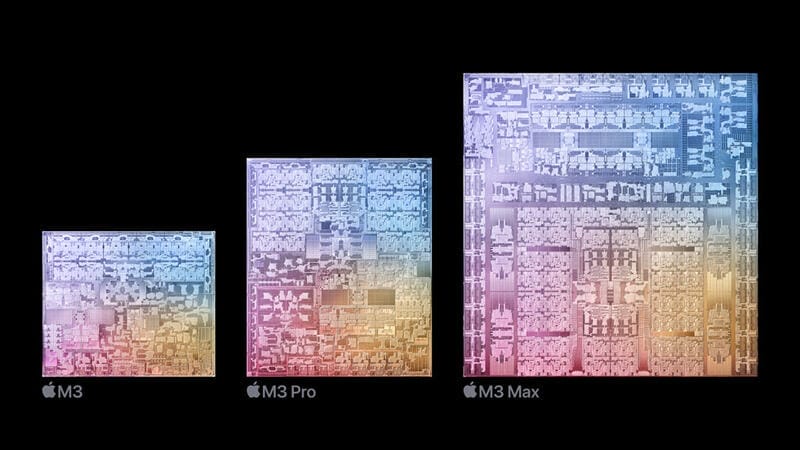In 2023, Apple Inc announced the M3 Chipset, the successor to the previous M1 and M2 series that known because heir efficiency and performance. The M3 series includes several improvements over its predecessors, marking the release of their latest iMac and MacBook products.
Available in three variants: M3, M3 Pro, and M3 Max, the latest Apple chipset promises a more comfortable and practical experience for users of their products.
For Apple enthusiasts and fans, this article will present 5 Facts About Apple’s M3 Chipset to enhance your knowledge of their latest releases.
1. Using 3 Nanometer Manufacturing Process

Compared to its predecessors that used a 5 nm process, Apple’s latest chipset utilizes a significantly smaller 3 nm process. This advancement allows Apple products using the M3 series to achieve a 30% to 50% increase in performance and efficiency compared to the M1 series.
Apple also claims that the 3 nanometer process used in the M3 series is the first in the world to be embedded in a desktop.
2. Introduction of Dynamic Caching

Dynamic Caching is a new feature announced by Apple to enhance the efficiency of their GPUs. Reportedly, Dynamic Caching prevents shader programs on the GPU from taking up more memory than necessary.
With Dynamic Caching, Apple also claims this technology serves as the foundation for their new GPU architecture, increasing GPU efficiency and performance for demanding applications. The M3 chipset is one of Apple’s breakthroughs to be reckoned with for its performance.
3. Ray Tracing Feature on Mac Products

Following the introduction of Dynamic Caching, the M3 chipset includes Ray Tracing, which models light properties to allow applications to produce more realistic and accurate images. The M3 chipset processes applications 2.5 times faster compared to its predecessors.
Although Ray Tracing is not yet fully supported by all games available on Mac, this feature should enhance the gaming experience on the latest Apple products.
4. Available in M3, M3 Pro, and M3 Max Variants

Apple’s latest M3 chipset offers three variants with different configurations: M3, M3 Pro, and M3 Max. Apple tailors these differences to meet users’ needs in operating their devices.
The M3 features 8 CPU cores (4 high-performance & 4 energy-efficient), 8-10 GPU cores, and supports up to 24 GB of unified memory. Apple claims the M3 provides 65% faster graphics performance compared to the M1 series and 35% faster CPU performance than the M1 series.
The M3 Pro variant has a 12-core CPU (6 performance & 6 efficiency), offering faster single-thread performance than the M1 Pro. With up to 18 GPU cores, it brings a 40% improvement in graphics processing compared to the M1 Pro. The M3 Pro supports up to 36 GB of unified memory, enabling users to handle larger projects comfortably.
Finally, the M3 Max, the highest variant in the M3 family, features a 16-core CPU (12 high performance & 4 efficiency), 40 GPU cores, and supports 128 GB of unified memory. The M3 Max significantly outperforms its predecessors, allowing users to run demanding applications smoothly and quickly, making it one of the fastest chipsets in the latest laptops!
5. Products That Using the M3 Series Chipset

The 14 inch MacBook Pro and the 16 inch MacBook Pro series will each feature M3, M3 Pro, and M3 Max variants as their processors. The prices will vary depending on the series.
Additionally, the 2 inch iMac series will incorporate the standard M3 as its processor. The iMac, released alongside the MacBook Pro, is claimed to deliver higher speeds compared to previous iMac series.
These are the 5 facts about Apple’s latest chipset, as summarized by the author. If you are interested and want to know the complete specifications of their latest products, you can visit Apple’s official website or their social media channels. Thank you.
Other information for M3 Chipset click here
Don’t miss out on staying updated at Technobrads.com.
- ASUS Officially Launches the ASUS NUC Pro Series: Compact PC with Extra Power! - July 12, 2024
- Top 10 Gaming PCs of All Time! - July 9, 2024
- The Evolution of Android Smartphone - July 8, 2024




